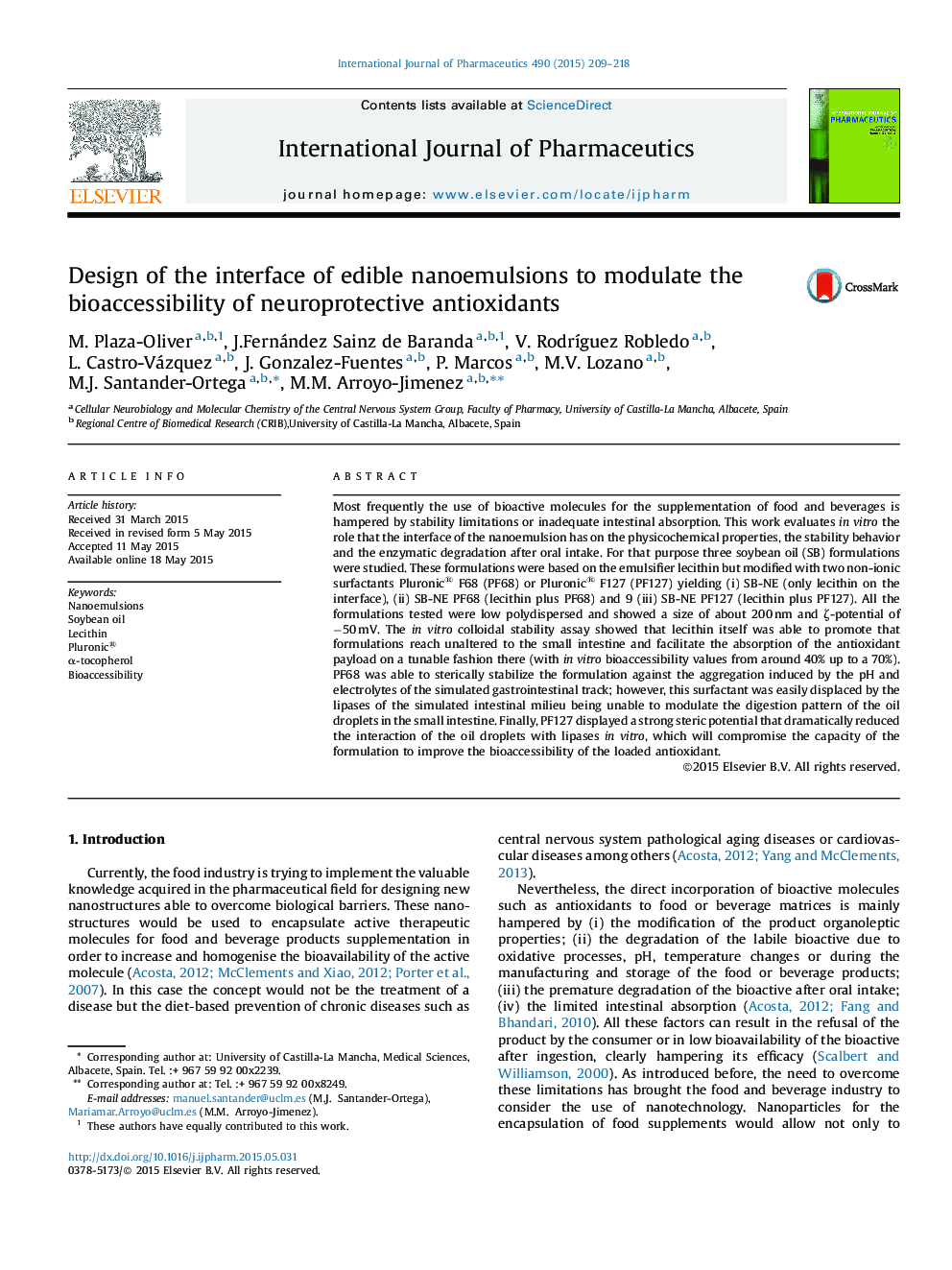| کد مقاله | کد نشریه | سال انتشار | مقاله انگلیسی | نسخه تمام متن |
|---|---|---|---|---|
| 2501307 | 1557334 | 2015 | 10 صفحه PDF | دانلود رایگان |
Most frequently the use of bioactive molecules for the supplementation of food and beverages is hampered by stability limitations or inadequate intestinal absorption. This work evaluates in vitro the role that the interface of the nanoemulsion has on the physicochemical properties, the stability behavior and the enzymatic degradation after oral intake. For that purpose three soybean oil (SB) formulations were studied. These formulations were based on the emulsifier lecithin but modified with two non-ionic surfactants Pluronic® F68 (PF68) or Pluronic® F127 (PF127) yielding (i) SB-NE (only lecithin on the interface), (ii) SB-NE PF68 (lecithin plus PF68) and 9 (iii) SB-NE PF127 (lecithin plus PF127). All the formulations tested were low polydispersed and showed a size of about 200 nm and ζ-potential of −50 mV. The in vitro colloidal stability assay showed that lecithin itself was able to promote that formulations reach unaltered to the small intestine and facilitate the absorption of the antioxidant payload on a tunable fashion there (with in vitro bioaccessibility values from around 40% up to a 70%). PF68 was able to sterically stabilize the formulation against the aggregation induced by the pH and electrolytes of the simulated gastrointestinal track; however, this surfactant was easily displaced by the lipases of the simulated intestinal milieu being unable to modulate the digestion pattern of the oil droplets in the small intestine. Finally, PF127 displayed a strong steric potential that dramatically reduced the interaction of the oil droplets with lipases in vitro, which will compromise the capacity of the formulation to improve the bioaccessibility of the loaded antioxidant.
Figure optionsDownload high-quality image (166 K)Download as PowerPoint slide
Journal: International Journal of Pharmaceutics - Volume 490, Issues 1–2, 25 July 2015, Pages 209–218
